In today’s fast-paced digital world, businesses are always on the lookout for ways to stay ahead of the competition. One of the most effective strategies for achieving this is leveraging email automation.
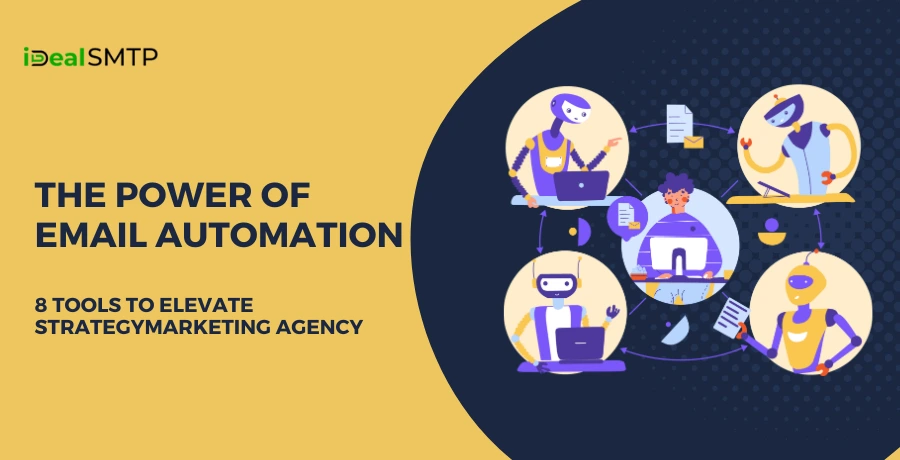
From nurturing leads to improving customer retention, email automation has become a cornerstone of modern email marketing strategies. But what exactly is it, and why should you care?
Table of Contents
Pricing
| Trail Plan | Standard Plan | Premium Plan | Professional Plan |
| $50 | $145 | $185 | $225 |
| Sending Limit | Sending Limit | Sending Limit | Sending Limit |
| 1000 Emails/Hour | 1500 Emails/Hour | 3000 Emails/Hour | 5000 Emails/Hour |
What Is Email Automation?
Email automation refers to the use of software and tools to send emails automatically based on predefined triggers or schedules. Instead of manually crafting and sending each email, you set up workflows that allow the software to do the heavy lifting. This not only saves time but also ensures that your messaging is consistent and timely.
Why Is Email Automation Important?
Email automation plays a crucial role in modern marketing strategies, offering significant advantages for businesses of all sizes. Here’s why it’s essential:
Efficiency and Scalability
To send individually customized mail to thousands of customers is not possible if they are sent by hand. Email automations is highly beneficial as a way to expand the effectiveness of promotional campaigns without losing individuality.
Improved Customer Engagement
Targeted messages have the capability of improving the engagement rates if and when they are sent.
Data-Driven Insights
Automated email software comes with some form of analysis that shows what is working, and what isn’t working for the business.
Cost-Effectiveness
Since the use of automated emails eliminates the need for undertaking systematic email marketing service which may call for a lot of personnel hours, this system is economical.
Main Characteristics of Email Automation Tools
When choosing the best email automation platform, look for the following features:
- Personalization and Segmentation- It is crucial that businesses segment their target audience and engage them via custom-built messages.
- Integration Capabilities- When selecting the tool, the latter should be compatible with CRM, e-commerce platforms, or any other marketing instruments.
- Analytics and Reporting- In the detailed reports you are also able to fine-tune your strategies as time progresses.
- Ease of Use- An easy-to-use interface of the software guarantees that even individuals having lesser technical knowledge in the organization can work with the software.
- Automation Workflows- It is convenient to be able to set up templates in advance, and to be able to adjust the overall scheme to the specifics of a particular work.
The Best Email Automation Platforms and Tools
There is a plethora of best email automation platformavailable, each catering to different business needs. Here, we explore eight outstanding email automations tools:
1. iDealSMTP
iDealSMTP is an efficient email marketing solution created for companies oriented toward improving their operations. It offers:
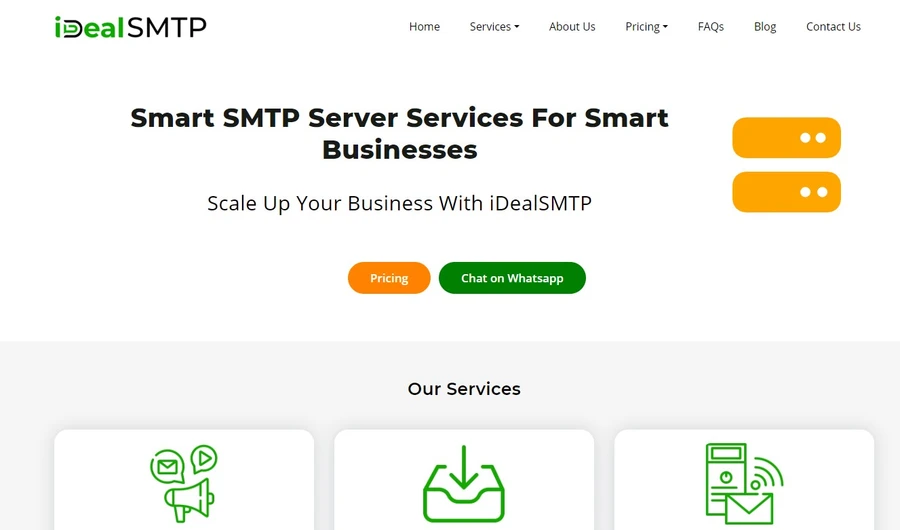
- High Deliverability- Secures your mail delivery so your messages get to the recipients’ inboxes, not their spam folders.
- Real-Time Analytics- Watch out for open rate, click-through rate, and bounce rate.
- Scalability- It is suitable for application in both small-scale new businesses and huge businesses.
Moreover, using iDealSMTP, you can integrate API for more working fluency, which is helpful for marketers.
2. SMTPget
In both categories of email marketing and transactional, SMTPget proves to provide an ideal solution. Key features include:
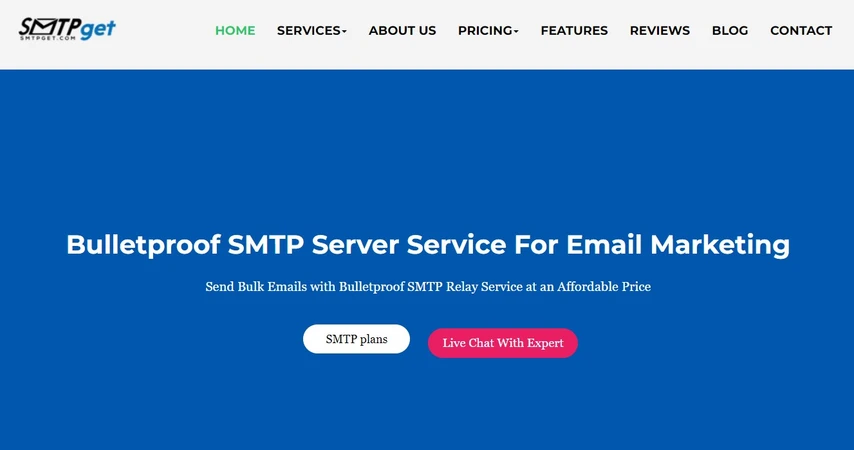
- Customizable SMTP Settings- Tailor email delivery to fit your unique needs.
- Email Warm-Up Support- Slowly add new sending volume onto new servers.
- Integration-Friendly- Integrated with other commonly used CRM and eCommerce solutions.
A flexible and reliable approach makes SMTPget appropriate for any company no matter its size.
3. SMTPmart
SMTPmart is more of a ‘Web Based Email-Blasting’ tool that is designed for those who fire voluminous emails. Highlights include:
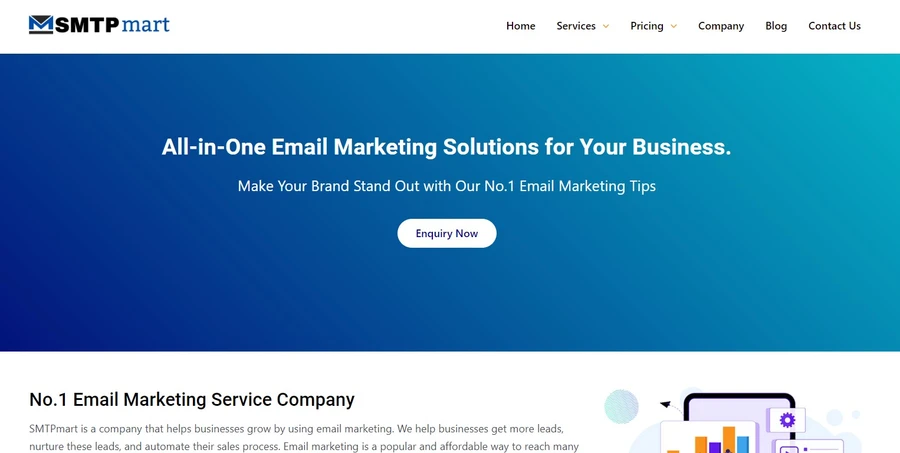
- Bulk Email Sending- To do so they move through thousands of emails with the same ease as a jet.
- Advanced Segmentation- This means implementing targeting by behavior or even by demographic characteristics.
- Detailed Reports- Use the pendulum swing of the knob to get insight as to how effectively one is securing RETURN ON INVESTMENT.
Compared to many other ways, SMTPmart is perfect for those companies that focus on using tools that do not require too much money for the service and do not demand from their users a high level of computer literacy.
4. Mailchimp
A household name in email marketing, Mailchimp offers an array of automation features, such as:
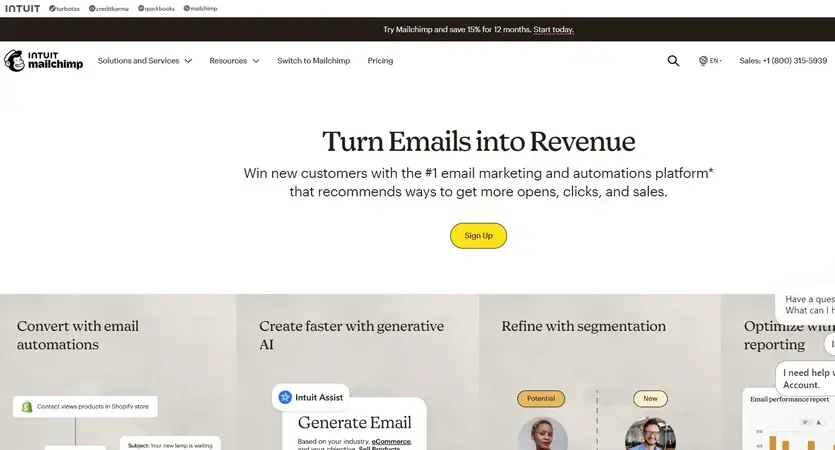
- Pre-Built Automation Workflows- Spend less time while preparing materials with ready-to-use templates.
- AI-Driven Personalization- This means delivering relevant content to everybody, but in the case of subscribers, it is much more specific.
- All-in-One Platform- Some of the tools that it can hold include a social ads tool, a landing page tool, and so on.
Many marketers can testify to the ease of using the interface making it suitable for new and seasoned marketers.
5. Constant Contact
Simple to use, Constant Contact is particularly suitable for small enterprises. Key features include:
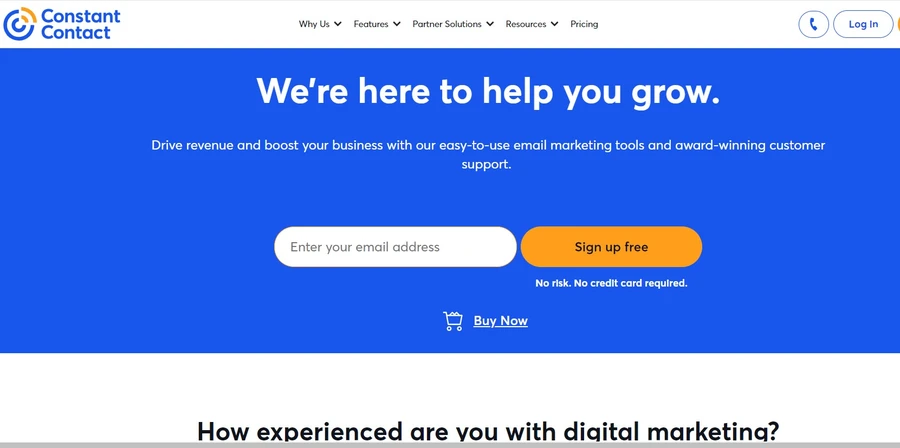
- Drag-and-Drop Email Builder- Compose business e-mails quickly and easily.
- Event Management Tools- Advertise and/or facilitate an upcoming webinar or live event.
- Mobile-Friendly Campaigns- This would mean that the emails should now appear stunning on the receiving device.
Customer support in Constant Contact is also very helpful, so working with the company is relatively secure.
6. ActiveCampaign
ActiveCampaign is an email marketing company that packages its email services with potent automation tools. Features include:
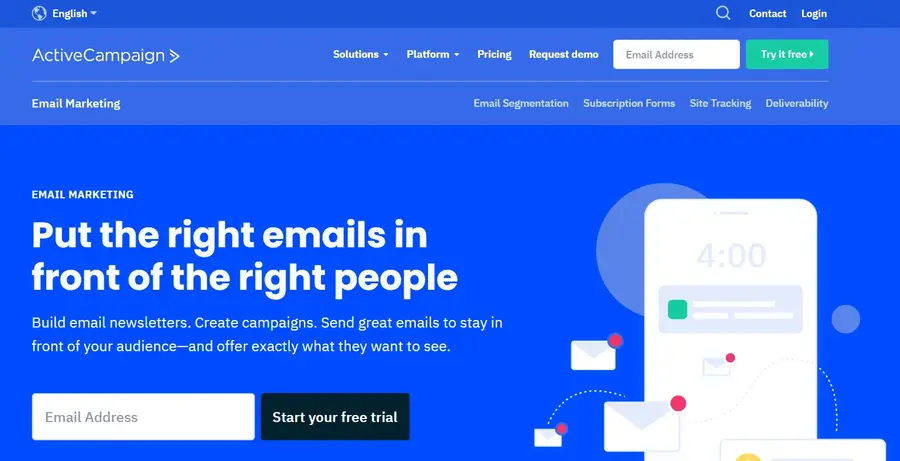
- Customer Journeys- Generic processes are not effective for the different stages of the customer lifecycle; create your processes for each.
- CRM Integration- If you need to sync your sales and marketing, then do it easily.
- A/B Testing- Enhance strategy, and try to focus more on the emails sent to bring the best engagement.
High levels of automation make ActiveCampaign the best for sophisticated marketers.
7. HubSpot
Email marketing is included in the remarkable suite of tools that HubSpot offers to its users. Benefits include:
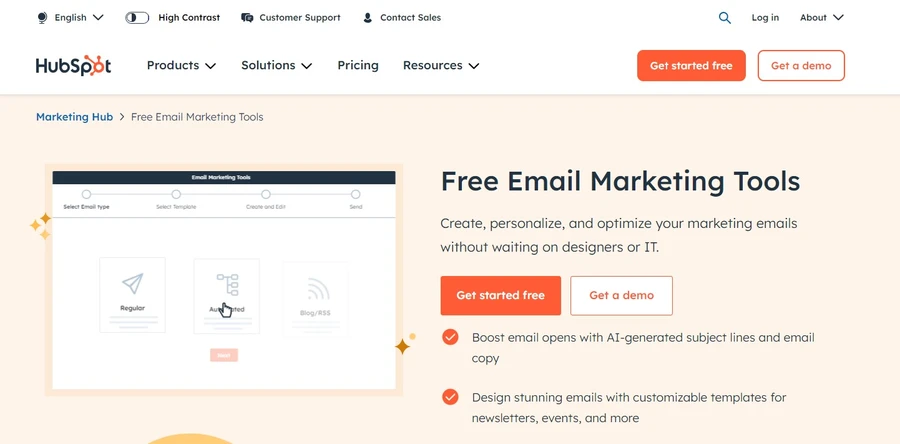
- Free CRM Integration- You should also integrate your customers’ data into one location.
- Smart Personalization- Apply data to the content of the emails sent.
- Performance Analytics- Maintain a finer on-a ‘campaign level
The ability to scale the application also makes HubSpot perfect for all severities of businesses from startups to large corporations.
8. ConvertKit
The platform focuses on email marketing and it is designed to engage content creators and bloggers majorly. Key features include:
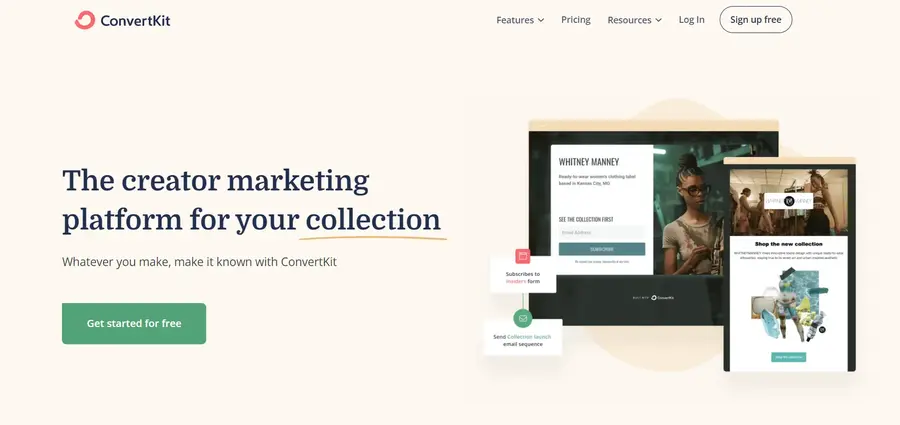
- Subscriber Tagging- Make your audience narrow so that you can send them relevant messages.
- Automated Sequences- Convert leads with existing top sequences of emails.
- Landing Pages- It captures leads right within the platform.
ConvertKit is thereby a specific yet strong option that focuses on creative people to maintain its basic layout.
Best Practices for Email Automation
To get the most out of your email marketing service, follow these best practices:
1. Start with Clear Goals
First of all, specify the goal which you want to reach It is essential before starting to organize the automation of work. Are you building developed sales leads, welcoming new customers or seeking sales? More achievable goals are going to lead to a clear strategy.
2. Segment Your Audience
Customers are not homogeneous in any company. Segment your audience by either demographic, behavioral, or by their prior purchases. This makes them more strategic and effective in their deliverables as campaigns.
3. Learn How to Write Subject Lines
Subject line comes first; it is the first thing that the recipient sees when receiving the mail. It should be therefore interesting to the target individuals in order to open and read the mails.
4. Focus on Personalization
Personalize by using the recipient’s name, suggest products he or she already bought before, or send certain content only. Personalized emails do much better than simple generic mass emails.
5. Test and Optimize
Utilize split and split/verify split to test campaign subject lines, the layout of the email, and the CTA buttons. Since paying SBs is an expensive affair, it is wise to adjust your strategy from time to time depending on performance statistics.
6. Monitor Metrics
Open rates, click-through rates, and conversion rates help understand the general trend of how your campaign is performing. It is advisable to use this information while making decisions.
Popular Use Cases for Email Automation
- Welcome Emails- Welcome new subscribers with a sequence of e-mail notifications about their subscriptions.
- Abandoned Cart Reminders- Increase overall conversion rates by targeting consumers with a message about items they left in the shopping cart.
- Customer Feedback Requests- Survey the customer post-purchase or post-interaction with the firm.
- Birthday or Anniversary Offers- Celebrate your customer’s accomplishments by offering them a discount or some other form of incentive on their special day.
- Re-engagement Campaigns- Target Your Old Subscribers with special content or special Offers.
Choosing the Right Email Automation Software
Deciding on what email automation software to choose depends on the requirements of your business, financial position, and knowledge level. Here are some tips:
- Evaluate Features- This means you have to list the features that are critical for your campaigns and then compare tools based on these features.
- Consider Scalability- Select one or several of them that can be used for the development of your business.
- Check Pricing- Expect the company to use simplified prices and compare the costs including features that may come with the prices.
- Read Reviews- He also stated that information about a particular platform on the Internet in the form of users’ feedback and case studies is also accessible.
- Leverage Free Trials- Many email automations solutions are offered with free trials. Try a few and find out one that fits your needs most.
Future Trends in Email Automation
- AI and Machine Learning- Sophisticated calculations will be used to identify the targeting and personalization even better.
- Interactive Emails- Personalised messages with features such as carousels and quizzes will most likely become more common.
- Omnichannel Automation- Multichannel marketing integration where email is in harmony with SMS, social media, and other communication channels.
- Hyper-Personalization- Using real-time data to present highly targeted information.
Conclusion
Email automation is not longer a luxury, it is a necessity for organizations particularly those that seek to expand and grow into more competitive markets in the burgeoning digital economy. However, if you select the proper email automations tool, together with the following recommendations, your email marketing campaigns is going to be effective, interesting for the audience, and, most importantly, productive!
Businesses regardless of size, should be able to find the right email marketing service to change how business communicates with their customers. Many of the best email automation tools are available to start discovering now, so start to improve your marketing approach.







